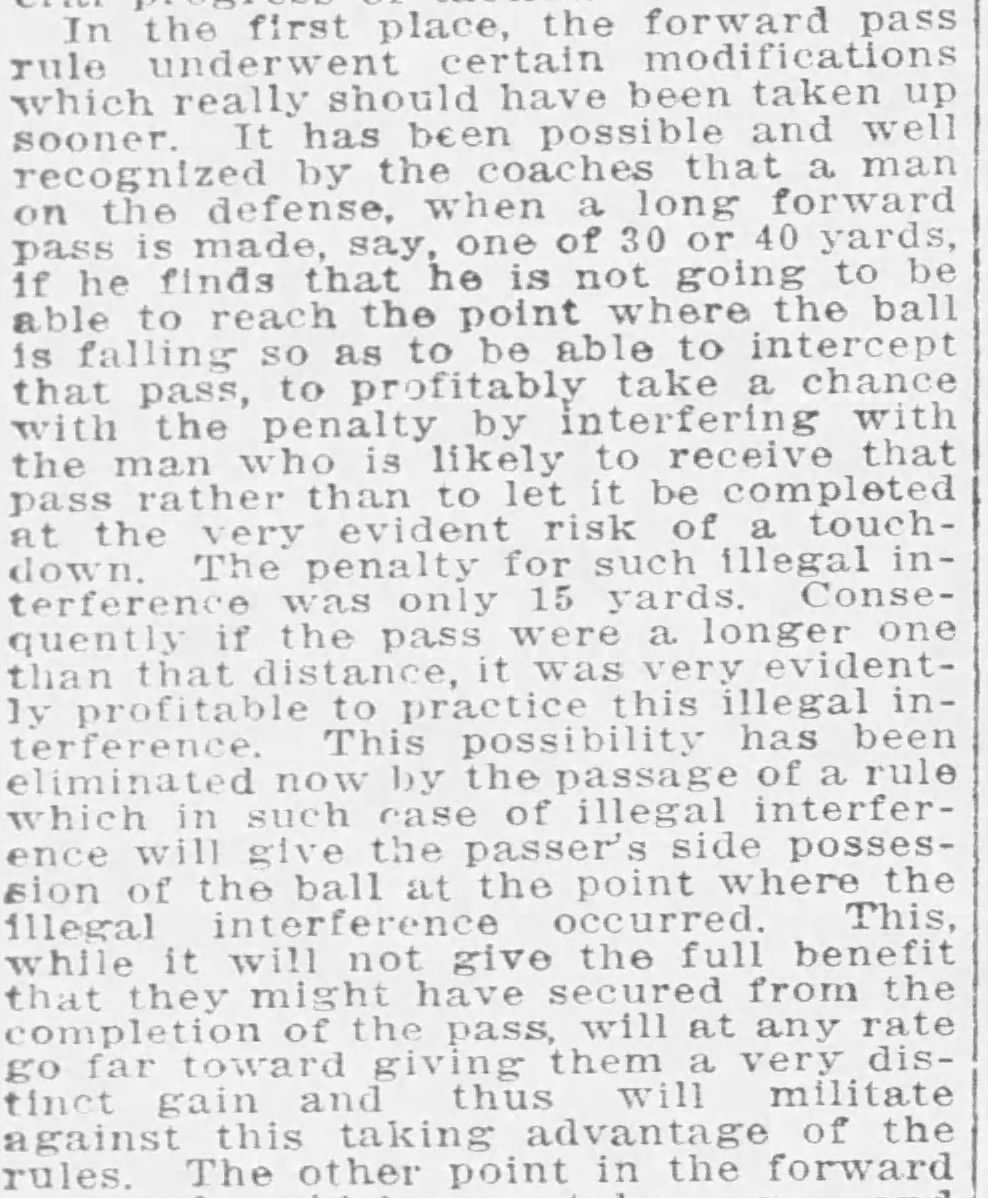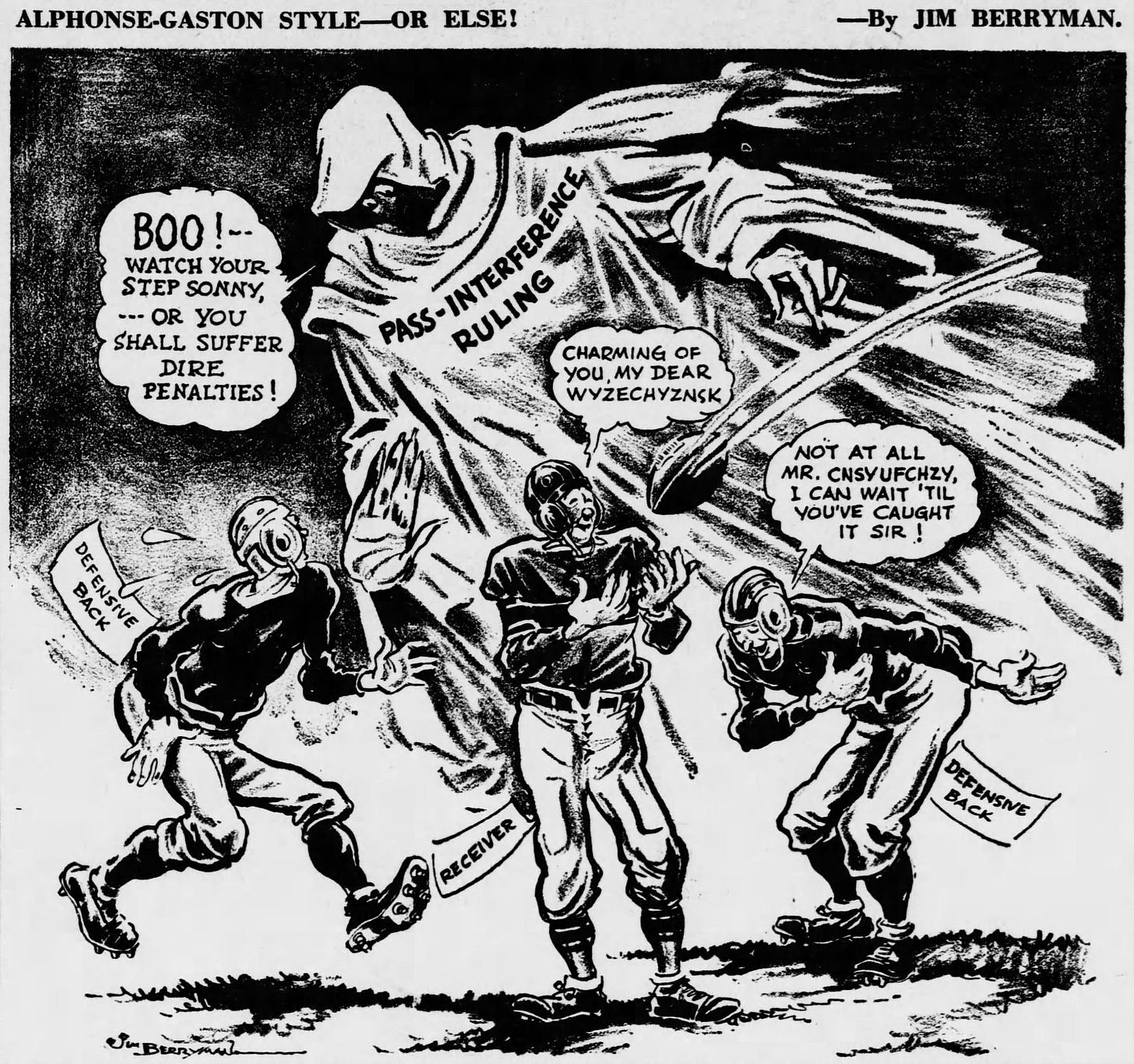Today's Tidbit... Changes In Pass Interference Penalties
Football legalized the forward pass in 1906, and an earlier Tidbit covered how the game lacked a pass interference penalty until 1908. Pass interference entered the game in 1908 as part of the illegal use of hands foul, which resulted in a 15-yard penalty when committed by the offense and a 5-yard penalty when called on the defense. By 1910, the rule makers modified the rule so that pass interference by the offense resulted in a loss of a down and a 10-yard penalty when called on the defense.
As the forward passing game developed and became a more consistent threat, defenders began intentionally interfering with potential receivers when they were beaten on a play, figuring that taking a penalty was better than giving up a long gain or a touchdown. Many viewed the intentional interference as poor sportsmanship, but the tactic continued in use, so the rule-makers increased the penalty to 15 yards in 1916.
By the following year, they deemed even that penalty inadequate and made defensive pass interference a spot foul, giving the offense the ball at the spot of the foul. Defensive pass interference in the end zone resulted in spotting the ball at the 1-yard line. Walter Camp provided the rationale for the change as follows:

Over time, the spot foul penalty came under criticism. Some said pass interference was not called enough due to reluctance among the officials to call such a severe penalty. Grantland Rice and others argued that the officials treated receivers with kid gloves and called defensive pass interference too often.

Several high-profile pass interference calls during the 1936 season led to calls for change, with many suggesting a return to the 15-yard penalty of old. However, the rule makers held firm until 1984, when the NCAA substituted the spot foul for a 15-yard penalty. Predictably, those who opposed the change argued that coaches would instruct defenders to intentionally interfere with receivers when beaten on plays -the same tactic Walter Camp and others tried to limit in 1917. Of course, that is exactly what happened, but by the mid-1980s, the football community no longer viewed the tactic as poor sportsmanship but as a tactically intelligent move, accepting a penalty rather than giving up a potential touchdown.
Football Archaeology is reader-supported. Click here to buy one of my books or otherwise support the site.


